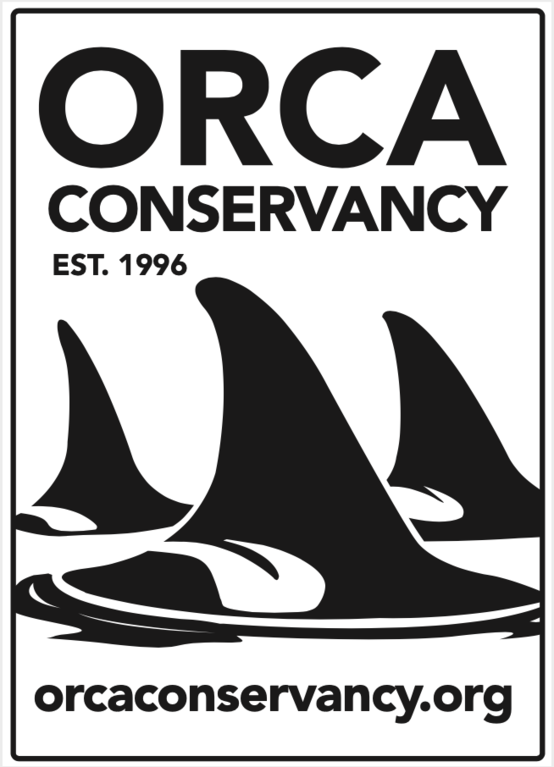Petition filed to list local orcas as endangered species

 Three local groups joined the Arizona-based Center for Biological Diversity in issuing a "May Day" for local killer whales yesterday. A petition, formally requesting the Southern Resident killer whale population be listed as an endangered species under the federal Endangered Species Act, was filed with the National Marine Fisheries Service (NMFS). The Whale Museum, Orca Conservancy and the Friends of the San Juans were co-petitioners. As an alternative, the petition asks for the whales to be listed as an endangered species.Over-fishing, pollution, whale-watching vessels and the small population size are cited as concerns in the 108-page petition. The petition is available on the CBD's Web site. The non-profit organization is dedicated to protecting endangered species and wild places of western North America and the Pacific.The petition states:This petition seeks to list the Southern Resident killer whale, Orcinus orca, as an endangered species under the Endangered Species Act. The Southern Resident killer whale has experienced alarming population instability over the past 30 years, indicating that the population is unsteady and oscillating toward extinction. Currently the population is experiencing a population decline that is incomparable to any previous population fluctuation in the Southern Residents’ known history, and it is now considered the most endangered killer whale population in the world.The Southern Residents’ extinction trajectory has been caused by several anthropogenic factors. During the late 1960s and early 1970s, approximately 34 Southern Residents were captured and removed for display in aquaria; perhaps a dozen more Southern Residents were killed in the process of capture (Olesiuk et al., 1990). These captures altered the sex and age ratio of the Southern Residents, creating a reproductive gap that led to population declines in the 1980s. Concentrations of organochlorines in Southern Residents have recently been determined to be greater than levels at which harmful effects have been documented in other marine species.The contamination may be affecting the survivability of the population. Chinook salmon stocks—the Southern Residents’ main food source—have been declining throughout the Pacific Northwest due to over-harvesting and destruction of salmon habitat. The reduction of this food source may be reducing the carrying capacity of the Southern Residents’ historical range, and may be enhancing the effects of bioaccumulated toxic chemicals. Disturbances caused by whale- watching and shipping vessels are also a likely factor in the Southern Resident killer whale’s decline. Vessel traffic can affect individual whale behavior and lead to fatal collisions with ships.More information is available on the Center for Biological Diversity Web site.
Three local groups joined the Arizona-based Center for Biological Diversity in issuing a "May Day" for local killer whales yesterday. A petition, formally requesting the Southern Resident killer whale population be listed as an endangered species under the federal Endangered Species Act, was filed with the National Marine Fisheries Service (NMFS). The Whale Museum, Orca Conservancy and the Friends of the San Juans were co-petitioners. As an alternative, the petition asks for the whales to be listed as an endangered species.Over-fishing, pollution, whale-watching vessels and the small population size are cited as concerns in the 108-page petition. The petition is available on the CBD's Web site. The non-profit organization is dedicated to protecting endangered species and wild places of western North America and the Pacific.The petition states:This petition seeks to list the Southern Resident killer whale, Orcinus orca, as an endangered species under the Endangered Species Act. The Southern Resident killer whale has experienced alarming population instability over the past 30 years, indicating that the population is unsteady and oscillating toward extinction. Currently the population is experiencing a population decline that is incomparable to any previous population fluctuation in the Southern Residents’ known history, and it is now considered the most endangered killer whale population in the world.The Southern Residents’ extinction trajectory has been caused by several anthropogenic factors. During the late 1960s and early 1970s, approximately 34 Southern Residents were captured and removed for display in aquaria; perhaps a dozen more Southern Residents were killed in the process of capture (Olesiuk et al., 1990). These captures altered the sex and age ratio of the Southern Residents, creating a reproductive gap that led to population declines in the 1980s. Concentrations of organochlorines in Southern Residents have recently been determined to be greater than levels at which harmful effects have been documented in other marine species.The contamination may be affecting the survivability of the population. Chinook salmon stocks—the Southern Residents’ main food source—have been declining throughout the Pacific Northwest due to over-harvesting and destruction of salmon habitat. The reduction of this food source may be reducing the carrying capacity of the Southern Residents’ historical range, and may be enhancing the effects of bioaccumulated toxic chemicals. Disturbances caused by whale- watching and shipping vessels are also a likely factor in the Southern Resident killer whale’s decline. Vessel traffic can affect individual whale behavior and lead to fatal collisions with ships.More information is available on the Center for Biological Diversity Web site.
